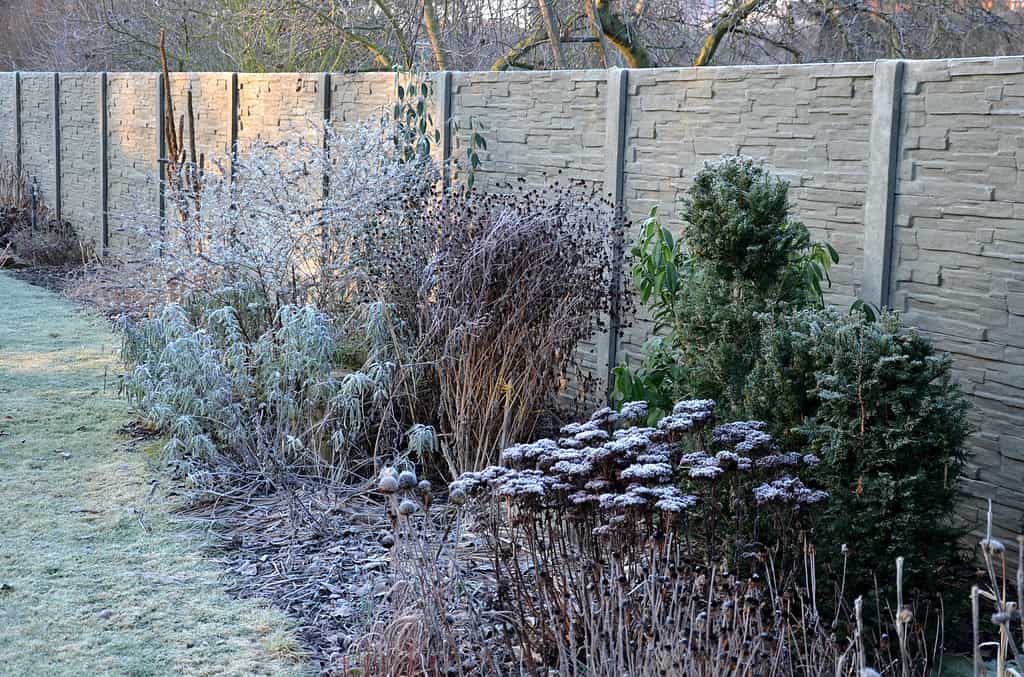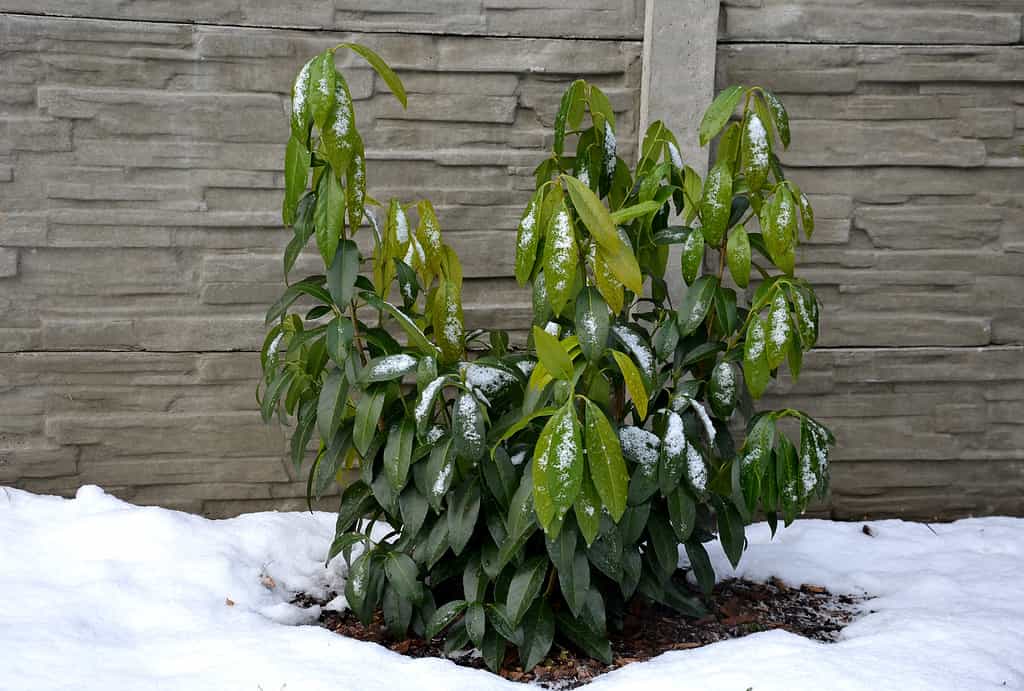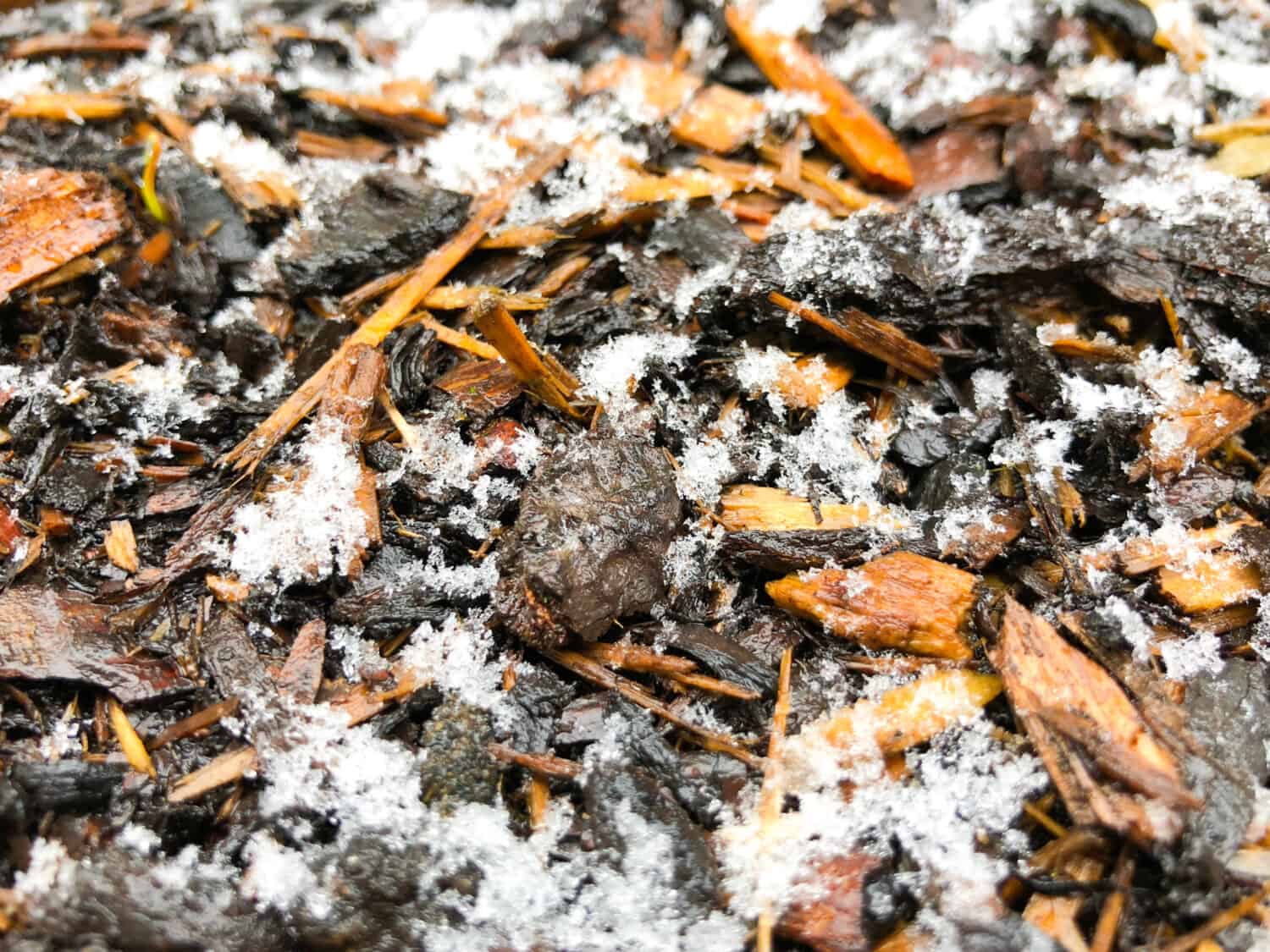
Some plants do best without mulch in the winter, needing more air circulation.
©beekeepx/iStock via Getty Images
As the winter months descend upon us and the chilly air settles in for the season, the cold weather means it is time to take additional steps to protect your garden. Mulching is a common gardening practice, particularly because it offers numerous benefits when it comes to soil health. It also protects plants, ensuring that when the spring months arrive, your plants are healthy and ready to bloom. However, when it comes to mulching in the winter, one question remains: Should you do it? Mulching in the winter is a topic of debate because there are a variety of factors to consider. Let’s explore the advantages and necessary precautions for mulching in the winter to help you make an informed decision for your garden.
The Importance of Mulching

The best time to mulch is right after the first heavy frost of the season.
©beekeepx/iStock via Getty Images
Before we dive into whether or not you should mulch in the winter, let’s start with the importance of mulching. Mulching is the best and easiest way to protect your plants. Plants that have shallow roots or are young transplants are more susceptible to freezing temperatures. Mulching is a standard, yet critical tactic to ensure your plants are protected against the frigid temperatures of winter. It also helps that mulching enhances the overall appearance of your home’s landscaping.
The Best Season for Mulching
Each season presents different purposes when it comes to mulching. For example, mulching in the summer is more about preserving soil moisture and preventing erosion or weeds. In the winter months, mulching is primarily used to insulate your plants and their roots. Although snow can act as insulation, mulch ensures that the ground doesn’t alternate between freezing and thawing. When this happens, plants, roots, and bulbs can get damaged—sometimes even pushed right up out of the soil.
Advantages of Mulching in Winter
As previously discussed, mulching can ensure that the ground is insulated from the cold temperatures. Here are four benefits of mulching in the winter.
1. Temperature Regulation
Mulch acts as a natural insulator, meaning it has the capacity to buffer against the extreme frigid temperatures of the winter. As the mulch acts as an insulator, it helps regulate soil temperature, which can prevent the fluctuations between thawing and freezing that are detrimental to plants.
2. Moisture Retention
The dry and cold winter air can lead to soil dehydration. Mulch serves as a protective barrier, which can help reduce water evaporation and assist with the soil retaining moisture. This is especially crucial for perennial plants.
3. Weed Suppression
Although it might seem as though weeds wouldn’t be an issue during the winter months, there are some types of weeds that are awaiting the right conditions to sprout. Winter mulching prevents weeds from growing, which means you’re ahead of the curve when blooms start sprouting in the spring.
4. Soil Erosion Prevention
Mulch has the capacity to shield soil from rain, snow, and ice. More specifically, the mulch can prevent soil erosion, which is very important for sloped and hilly areas.
Where To Apply Mulch

Leaving some distance between the plant and the mulch is key.
©beekeepx/iStock via Getty Images
It’s best to wait until after the first frost of the season. A killing frost, or a hard freeze, is when the temperatures fall below 28 degrees F. Mulching too early has the potential to weaken or kill the plant, and waiting too long could mean some little creatures and critters burrow underneath the ground near your plants. As you prepare to apply mulch, be sure to leave a 1 to 2-inch space around the plant. For shrubs and trees, there should be anywhere from 3 to 10 inches of space.
Winter Mulching Precautions
Of course, there are still some disadvantages to mulching in the winter, but by taking certain precautions, you can avoid some of the negative aspects connected to mulching. Waiting until the first frost and allowing the plant some distance from the mulch is important. However, it’s also important to consider which plants need mulch and which don’t. Hardier plants, such as lavender and rosemary can get too damp with mulch.
Even more, be sure that you select mulch that suits your plants and garden. Use organic mulch such as wood chips, leaves, pine needles, or straw. These materials are great in offering plants insulation.
When it comes to whether to mulch in the winter, the answer is somewhat complicated. It ultimately comes down to the needs of your garden, the types of plants you have, and what the overall climate is in your region. Winter mulching is great for particular areas and gardens, but it might not be for everyone. If winter mulching is completed thoughtfully, it can ensure that your garden remains healthy and hearty, ready to survive the cold season.
Thank you for reading! Have some feedback for us? Contact the AZ Animals editorial team.








